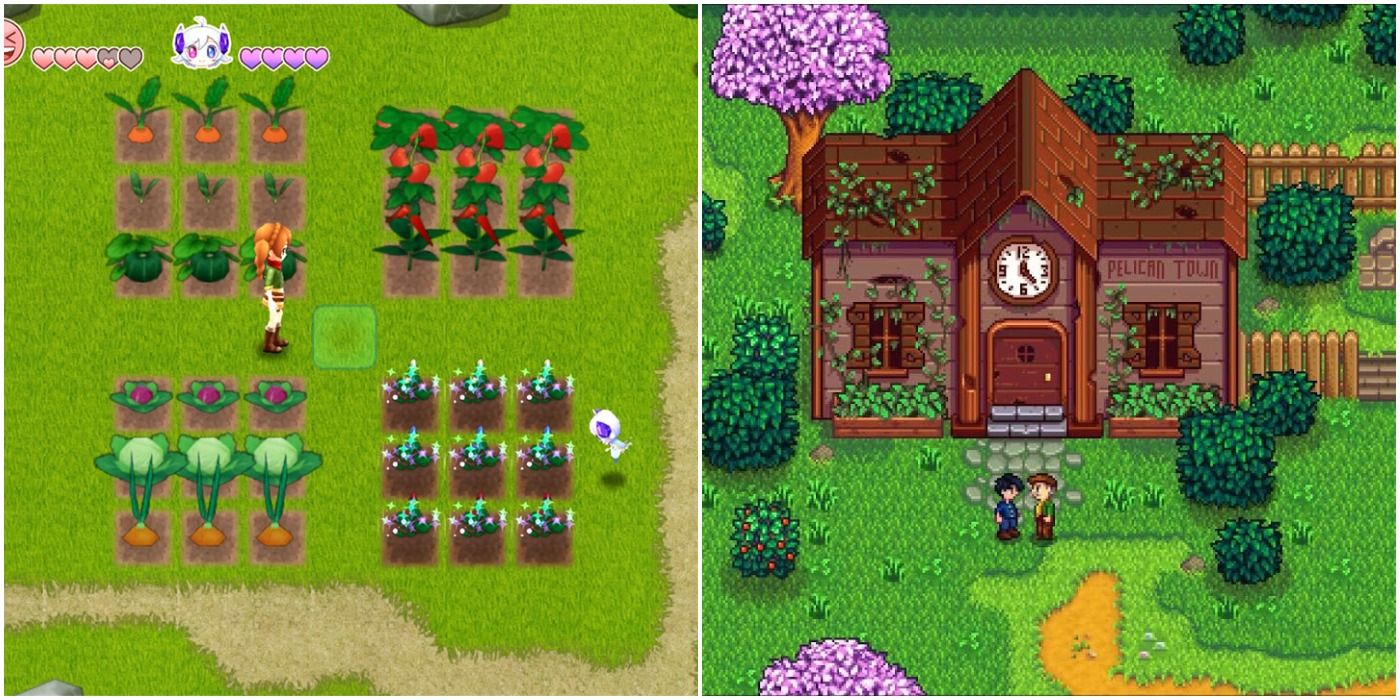Part 1: Introduction
Farming simulation games Stardew Valley and the Harvest Moon franchise have captivated players for years with their slice of life charm. Both transport players to peaceful small towns where they can spend their days tilling the soil, raising livestock, and getting to know the local community. However, with so many titles set within similar settings, it can be difficult to know which one is right for your tastes. This guide aims to break down the key differences between these beloved series to help you decide where to start your farming journey.
Part 2: What is Stardew Valley?
Stardew Valley was developed by independent developer Connor Hollis under his studio ConcernedApe and first released for PC in 2016. The game has since come to nearly every major gaming platform. As the name suggests, Stardew Valley takes place on a small farm surrounded by picturesque green hills in the titular valley. Players take on the role of a character who inherits their grandfather’s dilapidated farm plot and begins turning it into a thriving business. In addition to the standard farming simulator gameplay of planting and harvesting crops, players can go fishing, mining for ores and gemstones, craft useful tools and items, and interact with the colorful residents that populate the town of Pelican Town.
A Retro Inspiration
Stardew Valley was directly inspired by Harvest Moon and takes direct queues from the 16-bit art style of those classics. Players will find comfort in the pixelated graphics and soothing 8-bit soundtrack. The pixel graphics create a charming, nostalgic vibe that immediately makes players feel at home.

Freedom to Choose Your Path
Rather than adhere strictly to one type of gameplay experience, Stardew Valley offers meaningful choices to players on how they want to progress. While farming remains the core activity for generating income, players can choose to focus more on mining, combat in the randomly generated cave systems, artisanal crafting of goods, or building social relationships in the community through dating and marriage. No two playthroughs ever feel exactly the same.
Part 3: History of the Harvest Moon Franchise
The original Harvest Moon game was released in 1997 for the Super Nintendo Entertainment System (SNES) by developer Yasuhiro Wada and publisher Natsume. It helped to kickstart the genre of farming simulation video games still popular today. The Game Boy followed and the series soon expanded to other consoles like PlayStation and Nintendo 64. Titles garnered widespread critical acclaim for their slice of life charm and simple yet addictive gameplay loops.
Some truly beloved entries include Harvest Moon: Friends of Mineral Town, released for Game Boy Advance in 2003. It distinguished itself with well-rounded characters, charming graphics, and the flexible options to achieve different goals through farming, mining, fishing, or crafting depending on player preferences. These are core gameplay pillars Harvest Moon helped to define and perfect over many iterations.
The Franchise Split
While Natsume retained the rights to publish games under the Harvest Moon title internationally, original developer Marvelous eventually parted ways to produce Story of Seasons titles instead, beginning in 2015. This split caused some confusion among fans over which series now represented the true spiritual successor.
Part 4: Story of Seasons: Friends of Mineral Town
One such Story of Seasons title set to revive classic Harvest Moon gameplay is the 2020 remake of Friends of Mineral Town for the Nintendo Switch, titled Story of Seasons: Friends of Mineral Town. As the name suggests, this remake aims to faithfully recreate the experience fans adored from the original GBA game. Players step back into the shoes of a farmer newly arrived in the quaint rural town to restart their grandfather’s farm from the ground up. The charming visuals receive an HD upgrade while retaining the same top-down perspective and art style. Other core systems like farming, fishing, mining, crafting, and building relationships with the townsfolk are reportedly untouched so fans both old and new can enjoy the comforting simplicity and leisurely pace the series pioneered. According to hands-on previews, it delivers on its goal of capturing that nostalgic Harvest Moon essence through and through for modern platforms. Early reviews have praised Story of Seasons: Friends of Mineral Town for being one of the most authentic adaptations of a classic farming sim to date. For fans of the original seeking a trip down memory lane, it seems poised to becoming a new definitive version. Marvelous’ dedication to honoring what made the pioneering Game Boy Advance installment special bodes well for others taking their first steps into the Story of Seasons world too.
Part 5: Which Should You Choose?
For those new to farming simulation games, Stardew Valley offers a lower barrier to entry thanks to its lower price point and more open-ended structure without strict goals. Its colorful 16-bit visuals are instantly inviting and the gameplay provides healthy doses of farming, crafting, combat, and relationship-building to appeal to different tastes. Plus, with content continually added over many years, it presents excellent value for money. Meanwhile, Story of Seasons: Friends of Mineral Town attracts loyal Harvest Moon aficionados seeking a faithful re-creation of those defining older titles. Its focus on farm life, building a family, and charming character interactions above all else delivers precisely the comforting formula fans adored for so long but have not seen in recent years. It satisfies hardcore cravings for the comforting Harvest Moon experiences of old. As ever, it is best to research individual titles within each franchise too. Quality and direction varies somewhat between entries based on developer and the strengths of any given year. But for the ultimate classic formulas that started the genre, Stardew Valley and Story of Seasons: Friends of Mineral Town emerge as particularly strong starting points.
Part 6: Other Standout Options
A couple other series are worth knowing for those whose tastes run a bit outside traditional farming sim boundaries. The long-running Rune Factory marries standard rural life with dungeon crawling RPG adventures and combat. It presents a blend of genres that expands the formula in exciting ways.
Meanwhile, Animal Crossing by Nintendo focuses more on befriending animal neighbors than agriculture. Though farming does make appearances, its strength lies in joyful community interactions and a light collection component to decorate your home. Animal Crossing fosters an especially relaxing social atmosphere different from the farming gameplay looms large elsewhere.
Both Rune Factory and Animal Crossing deliver welcoming slice-of-life worlds with charming art styles and soundtracks all their own. They notably skew a bit more casual than deep farming mainstays while retaining that nurturing small town vibe.
Part 7: Conclusion
Whether you’ve been a fan of the genre for years or curious to try something new, farms await across Stardew Valley, Story of Seasons, Rune Factory and beyond. Ultimately the choice comes down to personal preference in gameplay priorities and aesthetic sensibilities. For the purest reproduction of what made fans fall in love with those pioneering Harvest Moon experiences decades ago, Story of Seasons: Friends of Mineral Town stands out. However, Stardew Valley offers modern refinements and deeper exploration for broader appeal. Either way, diving into these charming simulations provides the perfect digital escape from stress into relaxing and wholesome virtual communities. Now it’s time to choose your farmland - the crops won’t plant themselves!
 PlayStation VR: The Most Comfortable Virtual Reality Headset for Glasses Wearers
PlayStation VR: The Most Comfortable Virtual Reality Headset for Glasses Wearers